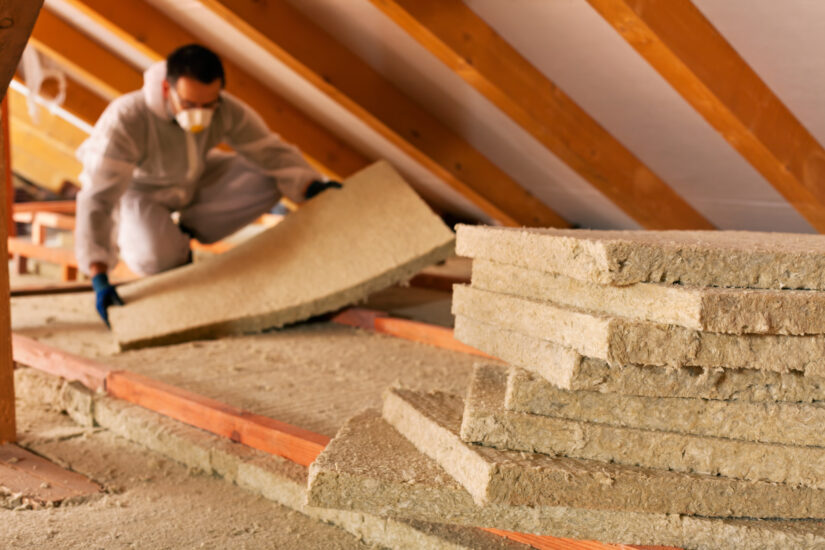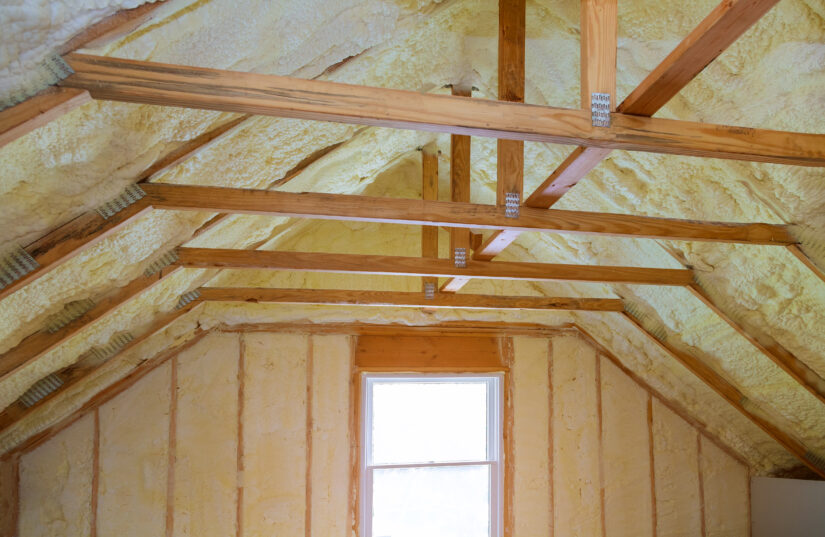According to the U.S. Department of Energy, heating and cooling account for 50% to 70% of the average American’s home energy usage. While Seattle, WA winters are still cold, our summers are getting hotter. As a result, many Washington state residents have considered upgrading or updating their HVAC systems, but fewer have considered adding new attic insulation to supplement their existing insulation.
Proper attic insulation can drastically reduce your energy output during cold winters and warm summers. Home Care Contractors of Seattle, WA specializes in attic insulation installation. Contact us for a free evaluation and estimate today.
How Proper Insulation Improves Energy Efficiency
Attic insulation acts as a barrier to thermal energy (heat). When it’s hot outside, it prevents the sun’s heat from passing into your home. Conversely, when it’s cold outside and you’re heating your home, attic insulation creates a barrier to prevent the heat from seeping upward into the attic. Because hot air rises, an uninsulated attic allows heat to escape, forcing your HVAC system to produce more.
For example, let’s say that you keep your thermostat at a constant 74° F. That means that during the warm months, your air conditioning unit will kick on every time the sun increases the internal temperature of your residence by over 74°. Likewise, in the winter, your heater will kick on when the thermostat detects that the internal temperature of your home has dropped below 74°. Crawl space insulation extends the time between these events.

Types of Attic Insulation
Whether you are looking to put in all new insulation or just looking to supplement the existing insulation in your crawl space, you want to get the biggest bang for your buck. We will go over the different kinds of attic insulation and determine which type of insulation install will be best for your attic and crawl space. First, we need to discuss how attic insulation is rated.
The R-Value of Attic Insulation
The R-Value measures the insulation’s ability to block thermal energy. The higher the R-Value, the better the job the attic insulation will prevent heat transfer. It will also determine how much attic insulation you’ll need. In Seattle, WA, the Department of Energy recommends three to four inches of insulation with an R-38 rating. This means that you should have a minimum of three to four inches with a combined R-Value of R-38 to create an energy-efficient home and save money.
Spray Foam Insulation
Closed-cell polyurethane spray foam is among the best types of foam for insulation. The foam is sprayed into the attic or crawl space and expands to fill in crevices and small cracks. In addition, this type of specialty insulation provides a water-resistant barrier, which is handy if you have a small roof leak.
Spray foam density should be two pounds for residential roofs and three pounds for commercial roofs. The R-Value of two pound spray foam insulation is 6.8, which means that five inches of spray foam yields an R-34 rating (5 x 6.8). If you are purchasing new construction, you should request closed-cell spray foam insulation, even if it costs more. If you’re considering replacing old insulation on an existing home, the vapor barrier that spray foam provides may be well worth the investment.

Fiberglass Roll Insulation
Fiberglass attic insulation often comes in rolls that are laid between the wooden beams of the roof’s framework. While fiberglass rolls don’t offer the consistency of spray foam, they do a fair job of resisting heat and lowering energy bills. The R-Value of fiberglass rolls is from 3.1 to 3.4 per inch of thickness, so you would need nearly a foot of insulation to meet the Department of Energy’s recommendation of R-38 for the Seattle, WA area. One drawback to fiberglass rolls is that it doesn’t provide an adequate moisture barrier if you should have a leak in the roof or condensation develops around air ducts.
Loose-Fill Fiberglass
Loose-fill fiberglass insulation is often referred to as “blown-in insulation” because it is blown in with a large nozzle. The loose fill settles between rafters and beams. While loose-fill insulation is less inexpensive and easy to install, it has its drawbacks. An air duct, stud, or power box can prevent the fill from reaching certain areas of the attic or crawl space. The R-Value is lower than Spray Foam or Fiberglass insulation. While it’s better to have your house insulated with loose-fill fiberglass insulation than no insulation, it’s important to ensure that you manually add insulation to any gaps you find.
Other Ways to Improve Energy Efficiency in Your House
Insulation is, of course, only part of the equation — albeit an important one. Even if you have a fully insulated house with an R-38 value, there are other things that you can do to bring down your energy costs.
Have Your AC Unit Serviced
When was the last time you had any services performed on your HVAC unit? If the answer is “more than a year,” you’re overdue. No amount of home insulating will make up for a malfunctioning HVAC unit, so schedule services today.
Air Sealing Your Windows and Doors
Even if you have ample attic insulation, Seattle weather patterns put substantial stress on your windows and doors. As these apertures expand and contract over the summer and winter, cracks form. Additionally, pest infestations can affect the integrity of your home. A detailed roofing inspection of your home should uncover any cracks and crevices that have developed.
Frequently Asked Questions About Attic Insulation and Insulation Services
The following are some of the most commonly asked questions by our customers, as well as answers from Seattle’s Home Care Contractors attic insulation experts. If you have your own questions about attic insulation or our other services, contact us directly. We will respond in a timely manner.
How do I know if I have enough attic insulation?
Seattle has a recommended R-Value of 38, which means that many homes have insufficient insulation. If you haven’t had additional insulation installed since you moved into your home, you likely need to add some.
However, this will be very difficult for you to determine visually. Contact Home Care Contractors for a free insulation installation estimate.
Can I install insulation myself?
It is possible to add attic insulation or supplemental insulation in your crawlspace, but it’s not recommended. Crawling around in your attic can be dangerous, and it will be difficult for you to determine whether you’ve added sufficient attic insulation. Seattle has brutal summers and winters, and you want to make your installation count. Leave the job to professionals who offer quality service and professional installation services. In Seattle and the surrounding area, that’s Home Care Contractors.
Should my walls also be insulated?
While there is some value to having your exterior walls insulated, the attic is the most critical place for insulation. During the winter, the heat and your home can escape through the ceiling, and during the summer, the right amount of insulation will prevent heat in the attic from entering your home.
Attic Insulation Professionals in Seattle
For years, Home Care Contractors have been insulating Seattle-area homes to help bring down energy consumption and save money. We have provided multiple bids throughout the state of Washington, and we have achieved the highest ratings for quality roofing service and customer care. Contact us today to schedule a free, no-obligation estimate.







